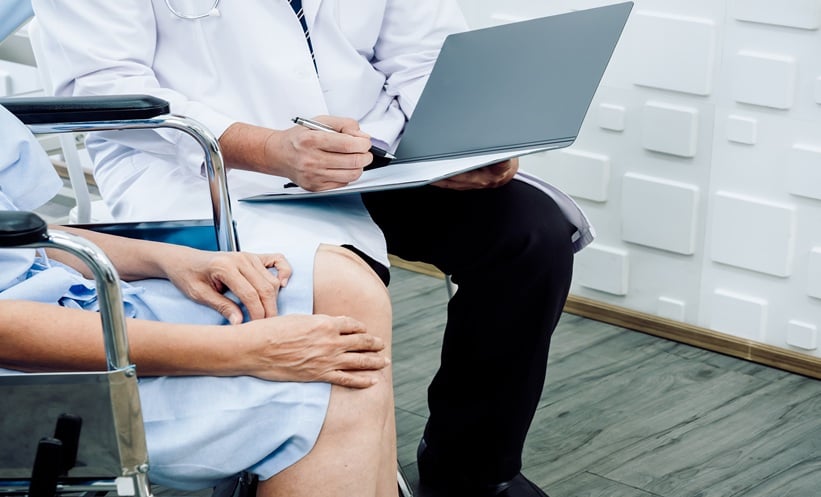Abstract
Switching patients from a reference to a biosimilar product has become a primary topic of interest, with different approaches being undertaken by the U.S. Food and Drug Administration (FDA) and the European Medicines Agency (EMA). In European countries, substitution of a reference medicine with a biosimilar product is encouraged for treatment-naïve patients. However, a more cautious approach has been taken with regard to switching patients on the reference product to a biosimilar product, with differences across countries. In general, there is a tendency to encourage the switch to biosimilars if conducted under the supervision of a clinician, with a few exceptions for substitution at the pharmacy level being permitted. There is also a general agreement that no further clinical trials are needed to allow any kind of switching, including automatic substitution, which differs from what is required by the FDA. With massive numbers of non-medical switches taking place in some European countries, as well as an increasing number of post-marketing studies being conducted, a growing amount of data on switching from originator to biosimilar products are becoming available. The data recorded so far suggest that switching is not detrimental for patients both in terms of safety and efficacy, although there have been some reports of increased treatment discontinuation rates after switching. Therefore, large-scale and long-term data are warranted to provide a more robust assessment of the effects of single or multiple switching. In addition, in Europe, the use of biologics has increased since their emergence, in particular in countries with historically poor access to biological medicines, and the tendency to promote the use of cheaper biological drugs is expected to increase further in the future. A communication strategy involving the patient and all other stakeholders that focusses on the patient’s specific circumstances and information needs will play a crucial role in the conduction of a successful switch. An overview of switching policies across Europe together with outcomes from clinical trials and real-world evidence data is presented in this review.
INTRODUCTION
The number of biosimilar medicines approved in Europe, USA, and other regions has been steadily increasing over the past years, in parallel with the expiration of marketing exclusivity rights of originator molecules. More recently, this phenomenon has led to major concerns about the similarity of monoclonal antibody- based biosimilar products to the originator and related potential safety and immunogenicity risks. As of June 2018, the European Medicines Agency (EMA) has granted marketing authorisation to 43 biosimilar products, including some molecules with different brand names, with nearly half of those being monoclonal antibodies mainly indicated for the treatment of inflammatory diseases.1 The USA trails behind Europe in this regard due to delays in implementing a clear regulatory pathway. However, as of June 2018, 11 biosimilar products have been authorised by the U.S. Food and Drug Administration (FDA), with 8 of them monoclonal antibodies, suggesting that the USA is rapidly progressing.2 In addition, the FDA has approved two insulin treatments as follow-on products (approved as biosimilars in Europe) via the abbreviated 505(b)(2) pathway, due to differences in the FDA pathway regulating authorisation of biological medicines.
With an increasing number of biosimilars reaching the market, hence allowing wider access to biological medicines, switching patients from treatment with an originator molecule to its biosimilar is becoming a hot topic in the clinic. Appropriate strategies to achieve the right balance between the need for patients to be optimally treated without additional risks and the control of public expenditure are warranted.
DIFFERENCES BETWEEN THE EUROPEAN UNION AND THE USA
Differences in Terminology
Differences between the FDA and EMA terminology for switching have contributed to some confusion on this topic. The EMA has recently released an information guide for healthcare professionals on biosimilars3 that includes definitions of terms related to replacement of medicines. According to the guide, interchangeability is a comprehensive medical and scientific term referring to the medical practice of changing a medicine for another one expected to have the same clinical effect, including replacement of an originator with its biosimilar or vice versa, as well as of a biosimilar with another biosimilar. Such a replacement can be carried out by switching or by automatic substitution; switching is an exchange performed by the prescriber, while automatic substitution is the replacement of a medicine with another equivalent drug performed by the pharmacist, as done for generic drugs, without intervention of the prescriber.
The confusion arises from the FDA’s definition of interchangeability. According to Section 351(i) of the Public Health Service Act and the FDA draft interchangeability guidance,4 the term interchangeable means that “the biological product may be substituted for the reference product without the intervention of the healthcare provider who prescribed the reference product”, thus corresponding to the EMA’s definition of automatic substitution.
Differences in Regulations
Interchangeability or substitution is regulated differently in the USA and in Europe. In 2017, the FDA released draft guidance on biosimilar interchangeability entitled ‘Considerations in Demonstrating Interchangeability with a Reference Product’.4 According to the guidance, sufficient information showing that a biosimilar product “can be expected to produce the same clinical result as the reference product in any given patient” has to be provided to get approval for interchangeability. To that end, an adequately powered switching study should be performed in a sensitive patient population. The design of such a study should include a parallel arm comparison, with one treatment arm alternating at least three times between the reference and the biosimilar product (multiple switching) and the other arm continuing with the reference product. Intensive pharmacokinetics sampling is to be conducted with clinical pharmacokinetics and pharmacodynamics, when applicable, representing the primary study endpoints, and immunogenicity and safety being key secondary endpoints. Once a product is FDA-approved as interchangeable, the pharmacist receiving the prescription may substitute the interchangeable product for the reference product without consulting the prescriber, depending on the individual state regulation. To date, no biosimilar has been granted interchangeability (in addition to biosimilarity) by the FDA. To the authors’ knowledge, only one study complying with FDA interchangeability guidance has been initiated, and this involved psoriasis patients with the recently approved adalimumab biosimilar Cyltezo® (Boehringer Ingelheim, Bracknell, UK).5 A multiple switch design has been incorporated into adalimumab6 and etanercept7 biosimilar efficacy and safety studies in psoriasis, as well as in the filgrastim8 biosimilar study, but without performing intensive pharmacokinetic sampling as recommended by the FDA.
Since the release of the guidance, a number of comments from different organisations have been submitted to the FDA. The Biosimilar Medicines Group, a sector group of Medicines for Europe, noted that the draft guideline did not take into account the wealth of evidence gathered in Europe where biosimilar medicines have been used in clinical practice.9 Based on current knowledge of switching, derived from post-marketing surveillance and clinical studies, the group recommended developing a more pragmatic guidance document balancing theory with learnings from clinical practice to date.
In the European Union (EU), the EMA gave decision-making authority regarding interchangeability or substitution to each national agency of its member states. To date, not all member states have released guidance or implemented a law regulating substitution; however, it appears that all states share the opinion that further clinical studies dedicated to assessment of switching are not required, differing from the opinion of the FDA. The thorough comparability study conducted in the development of a biosimilar, combined with the growing amount of data about switching from reference products to biosimilars in clinical practice and clinical trials, is considered sufficient. However, there also tends to be general agreement that automatic substitution, with the exception of a few selected cases, is not possible for biological medicines and should be considered with caution and carried out under medical supervision.
For example, the Italian Drug Agency (AIFA) has recently released a second position paper10 encouraging switching based on clinical judgment in patients being treated with the reference product, while excluding automatic substitution altogether. In the Netherlands, the Dutch Medicines Evaluation Board (MEB) released a revised opinion on biosimilar use,11 concluding that there was enough evidence to support the use of biosimilars in clinical practice, provided this occurs with caution and under certain conditions. Substitution of one biological medicine for the other, both for originator biologicals and biosimilars, is possible according to the MEB, as long as it is adequately monitored clinically and the patient is well informed. In the UK, NHS England released a document in September 201712 providing guidance on how to achieve the objective of treating 80% of existing patients with the best-value biological medicine within 12 months of the launch of a biosimilar medicine. A switch programme involving all stakeholders has been outlined, although it was stated that any decision to conduct such a switch should be done with the approval of a physician and in consultation with the patient, since automatic substitution for biologics is not permitted in the UK. In addition, France took one of the most favourable positions with regard to the uptake of biosimilars and substitution.13 Based on the 2017 French Social Security Finance Act (PLFSS), automatic substitution from a reference product to its biosimilar is allowed in the course of treatment provided the physician has not marked the prescription as ‘non-substitutable’ (similarly to generics). In practice, however, automatic substitution can only occur after an implementing decree has been adopted defining the precise conditions for biosimilar substitution by a pharmacist. In some countries, such as Germany and Sweden, automatic substitution is possible only for specific groups of biosimilars (e.g., those with the same manufacturer as the reference product).14
Availability of biosimilars is of particular interest for countries with limited access to expensive biological medicines due to financial constraints. Within Europe, this primarily concerns countries from Central and Eastern Europe. The highest increase in the use of different classes of biologics after the enrolment of biosimilars has been observed in Central and Eastern European countries, including Romania, Bulgaria, Slovakia, Slovenia, and Poland.15 Pharmacy-level substitution for both biologic-naïve patients and patients on treatment is possible in the Czech Republic, Estonia, Latvia, Poland, and Serbia with different modalities.16 In some cases, the physician can opt out, but this may require a justification. In Poland there is no distinction between generics and biosimilars, making automatic substitution possible in the absence of any specific law.14 In Bulgaria, Poland, and Serbia, tendering procedures are applied for purchasing biologics and the physician cannot opt out, thus forcing the patient to switch.16 If tenders are conducted frequently, as in Bulgaria, patients might be forced to undergo multiple switches. Further to this, the requirement to prescribe drugs by their international non-proprietary name in Estonia and Latvia favours prescription of biosimilars even if physicians can opt out.
Therefore, it appears that the current situation in Europe is highly dynamic; however, in general, prescription and use of biosimilars is encouraged to control public expenditure, and substitution under the supervision of a healthcare professional in patients on treatment with the reference product tends to be allowed or even forced in some countries. As previously described, in certain countries automatic substitution may occur in the absence of or against specific regulations or recommendations if the biological product is prescribed by its international non-proprietary name or if products are purchased by a bulk tender. For this reason, several non-medical switches have taken place in Europe. A non-medical switch is a switch conducted for reasons other than the patient’s health or safety, including economical or supply availability reasons, even if conducted with the agreement of the treating physician. For example, this has been the case in Denmark, where in 2015 a national guideline was implemented mandating non-medical switching of all patients treated with the infliximab reference product Remicade® (Janssen Ltd., High Wycombe, UK) to its biosimilar product Remsima® (Celltrion Healthcare Co. Ltd., Incheon, South Korea).
WHAT REAL-WORLD EVIDENCE IS SHOWING
As mentioned previously, a number of non-medical switches to biosimilar products have taken place in Europe within recent years. The majority of these have been single switches, i.e., a transition from the reference product to its biosimilar once the biosimilar was launched in the market. This generated a considerable number of reports of real-world experience, registry, and post-marketing data that were published or presented at international conferences, confirming that biosimilar switching continues to be a topic of great interest.
A recent literature review of switching studies with any biosimilar product found a total of 57 studies that included at least 20 switched patients, from inception to June 2017.17 Thirty-four of these studies were observational; 50 studies in total (27 observational) reported a non-medical reason for switching. Overall, it was observed that the number of large studies with adequate statistical power evaluating switching was very low and that long-term post-switch data were missing. In addition, information on immunogenicity was missing from most of the observational studies. Nonetheless, the overall conclusion was that switching to the biosimilar product did not raise special concerns in terms of either efficacy or safety. In a more recent review18 including all types of biosimilars, attention was also paid to multiple switching, which will certainly become more frequent in the future, including switches among different biosimilars. It was noted that data on multiple switching are still quite limited; only the three multiple switch studies of adalimumab,6 etanercept,7 and filgrastim8 previously mentioned were found, but it is expected that more data will be generated within the coming years.
One of the largest post-marketing studies that explored the effects of switching is the NOR-SWITCH study,19 sponsored by the Norwegian government, which randomised nearly 500 patients with various inflammatory diseases to either continue on the originator infliximab Remicade or to switch to its biosimilar product CT-P13 Remsima for 52 weeks. The study was double-blinded, with neither the study staff nor patients knowing the assigned treatment. Switching was demonstrated to be non-inferior to remaining on the originator treatment in terms of disease worsening after 1 year and did not present any notable safety issues. A 4% drug discontinuation rate was reported in the two groups, primarily due to adverse events. Changes in patient-reported outcome measures were also comparable between the two groups. It should be noted that switched patients experienced various inflammatory diseases, with numbers ranging from 16 patients with psoriatic arthritis to 77 patients with Crohn’s disease. Disease worsening was assessed differently for each disease, but the study was statistically powered to demonstrate non-inferiority only for the pooled groups of patients; therefore, no conclusion could be drawn on individual diseases.
A massive switch from reference to biosimilar products occurred in European Nordic countries, providing some robust long-term follow-up data. In Denmark, >800 patients with inflammatory arthritis and receiving stable therapy with infliximab were switched from the originator product (Remicade) to infliximab biosimilar CTP-13 (Remsima) and followed for >1 year in an observational study.20 No impact on disease activity was found, while retention rates after 1 year were slightly lower than those of an historical Remicade cohort, totalling 83.4% and 86.8%, respectively (p=0.03), with about half of withdrawals due to lack of effect. Patients who had received Remicade for >5 years exhibited longer retention with Remsima.
In a prospective observational study, 260 patients receiving maintenance therapy with infliximab (Remicade) at a single French hospital were switched to Remsima.21 Approximately half of the patients had axial spondyloarthritis. At the time of the third infusion, the retention rate was 85%. During a follow-up period (an average of 34 weeks), 18% of patients discontinued Remsima due to lack of efficacy; however, no changes in objective measures of disease condition or in other biological or safety parameters were observed. In subjects with axial spondyloarthritis, a significant worsening of Bath Ankylosing Spondylitis Disease Activity Index (BASDAI) score was found. Since BASDAI is a patient-reported outcome, it is believed that this discontinuation rate was related to wrong causal attribution effects rather than pharmacological differences. Similar results were reported in an observational study conducted in the Netherlands, where 192 patients with inflammatory arthritis were mandatorily transitioned from Remicade to Remsima.22 Although no changes in efficacy, safety, and immunogenicity during 6 months follow-up were found, 24% of patients discontinued treatment, mainly due to an increase in subjective features such as tender joint count, or patient’s global assessment of disease activity, and/or subjective adverse events such as arthralgia, fatigue, pruritus, or myalgia. Several small single-centre observational studies have consistently reported that switching from Remicade to Remsima/Inflectra® (HOSPIRA Enterprises B.V., Almere, Netherlands) does not lead to loss of efficacy or safety concerns.18
Following approval and launch in Europe during 2016 of the first etanercept biosimilar SB4 (Benepali® [Biogen, Cambridge, Massachusetts, USA]), a rapid and significant uptake took place. Prescription data from biologic registries showed that massive non-medical switches occurred in a number of European countries. In Denmark, >1,500 patients with rheumatic diseases were switched from Enbrel® (Amgen, Cambridge, UK) to Benepali in 2016. A 3-month follow-up after the switch showed that disease activity was largely unaffected,23 although 9% of patients stopped treatment during a 5-month follow-up period. After 1 year, the withdrawal rate was roughly 18%, with about half of these withdrawals due to lack of efficacy.24
Data from Sweden showed that 55% of >5,000 rheumatology patients who initiated treatment with Benepali had undergone a non-medical switch from Enbrel; 11% of these switched back to Enbrel after a median time of 55 days. Follow-up data showed no overall worsening in the condition of patients, although a proportion of patients interrupted treatment and, in some instances, returned to the originator drug.25
Furthermore, a recent analysis of discontinuation rates among rheumatoid arthritis patients recorded in the Swedish Biological Registry who received TNF-inhibitors during 2003–2011 found that 25% of patients on Enbrel discontinued the drug after 1.3 years. However, it was highlighted that overall biologic discontinuation rates tended to increase in the more recent years; therefore, comparison with historical rates from the past may no longer be valid.26 This is consistent with the outcome of the recent Dutch BIO-SPAN study.27 In the study, >600 patients with inflammatory arthritis were requested to transition from originator Enbrel to Benepali following a structured strategy with an opt-out option. Patients on treatment with Enbrel in 2014 were recruited as a historical cohort. The 6-month crude retention rate in the transitioned cohort was 90% versus 92% in the historical cohort, with an increased risk of drug discontinuation in the transition cohort (adjusted hazard ratio: 1.57) that was considered not clinically significant. The main reasons for discontinuation were lack of effect (more frequent in the historical cohort) and adverse events (more frequent in the transition cohort).
The Nocebo Effect
The above findings that suggest a tendency toward higher discontinuation rates following non-medical switch to a biosimilar product need further confirmation and investigation about possible causes. A nocebo effect has been frequently stated as a potential reason for this phenomenon, based on the observation that most of the patients who discontinued biosimilar treatment due to a perceived lack of efficacy or subjective complaints did not show objective signs of disease worsening or specific safety issues.
A nocebo effect occurs when a patient’s negative perception of a therapy causes an unexpected and unexplained worsening in treatment outcome. Regarding the use of biosimilars, a nocebo effect could be ascribed to a negative perception associated with transitioning from high-cost biologics to new lower-cost products without a medical reason. Consequently, the importance of a proper communication strategy to explain to patients the reasons for and benefits of the switch as well as the importance of adherence to therapy has been given increasing attention, particularly when planning large switch programmes. The crucial role of a proper and correct communication strategy involving healthcare professionals, patients, and payers was emphasised at the third multi-stakeholder workshop on biosimilar medicinal products organised by the European Commission,28 where the adoption of a collaborative approach to successfully switching to biosimilars represented a primary topic for discussion, with positive examples provided by Sweden, Denmark, and the Netherlands.
A collaborative approach was also fundamental to the switch programmes implemented at Southampton University Hospital, Southampton, UK.29 A total of 143 patients with inflammatory bowel disease were switched to Remsima through a managed switching programme that actively involved all stakeholders.29 No changes in the incidence of side effects, objective disease parameters, immunogenicity, or drug persistence were observed. Following the success of the programme, a similar study was implemented to transition patients with rheumatological diseases from Enbrel to Benepali. The strategy included a comprehensive education and support programme. As a result, 92 patients (99% of those requested) accepted switching and within the following 6 months only 8 discontinued treatment; 7 of these cases were due to reported lack of efficacy and 1 for an adverse event. The rate of discontinuation was low compared with the discontinuation rate in the 6 months preceding the switch.30
Studies primarily aimed at investigating patients’ and clinicians’ characteristics and beliefs in relation to drug persistence and treatment outcome following biosimilar switch, like the BIO-SPAN study,27 are being initiated and it is hoped that they will provide a better insight into the multiple aspects of a successful (or unsuccessful) switch to biosimilars.
CONCLUSION
The need for controlling public expenditure while making biological medicines accessible to a wider patient population means that the adoption of biosimilars is currently encouraged in Europe, even if individual countries take different approaches. To facilitate this process while also reinforcing patient confidence in switching and guaranteeing that any potential safety or efficacy signal is promptly recognised, it is of fundamental importance to collect real-world data derived from large-scale observational or registry studies. At the same time, specific collaborative switching programmes should be implemented that involve all stakeholders, with physicians maintaining a leading role. A properly managed switching strategy, combined with long-term follow-up of the patient’s condition and immunogenicity, will help to clarify all aspects of switching to biosimilars, including the concerns about reported higher rates of drug discontinuation.








